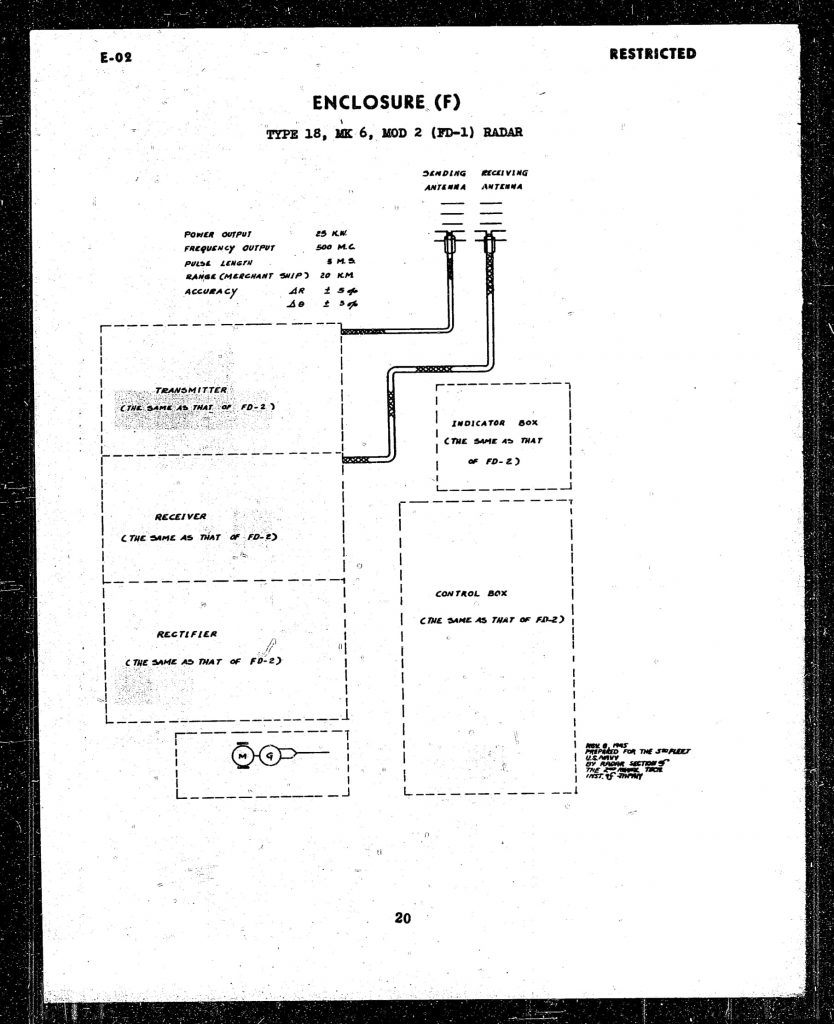十八試空六号無線電信機二型 (18-shiki Ku-6 Gō musen denshinki 2-gata, Protoype 18 Ku 6 Wireless telegraph Model 2). The FD-1 (also known as H-5) was an experimental long range omnidirectional search radar for small patrol planes. Experiments were stopped due to inadequate range during flying tests. After the IJN decided to develop specialized AI radars for night fighters, development continued as a locator radar with the FD-2 radar with 4 forward facing Yagi antenna in stead of two.
Technical Specifications
| 十八試空六号無線電信機二型 / Prototype 18 Ku 6 Wireless Telegraph Model 2 |
||||
|---|---|---|---|---|
| Designation | FD-1 or H-5 | |||
| Object | Patrol and Search | |||
| Research | started | June or December 1943 | ||
| Finished | February 1944 | |||
| Operational status | Not yet used | |||
| Installation | Unknown | |||
| Frequency | 0.6 meter / 500 kHz | |||
| Power Output (Peak) | 2.5 kw | |||
| Pulse Length | 3 µs | |||
| Repetition Frequency | 1000 cycles per second | |||
| Weight | ||||
| Units build | ||||
| Transmitter | Oscillation Circuit | Modulated Oscillator | ||
| Oscillator Valve | T-321 x1 | |||
| Receiver | Intermed. Freq. | 10 mc | ||
| Detector | 1st 2400 | 2nd FM-2A05A | ||
| Local ocillator | UN-955 | |||
| Scope Representation |
Diameter | 75 mm | ||
| Scanning Axis | Sinusoidal | |||
| Scale | None | |||
| Antenna | Type | 2x Yagi one sending, one receiving |
||
| Gain | 8db | |||
| Beam Angle | Horiz. | θƒ = ~30° | ||
| Vertical | θƒ = ~30° | |||
| Max. Range (Max.Effective Scale) | 75 km theoretical 20 against merchant schips |
|||
| Minimum Distance | 600 m | |||
| Accuracy of Range | ≃± 5% | |||
| Distance Discrimination | ≃500 m | |||
| Accuracy of Bearing | ± 0.5° | |||
| Angle Discrimination | ≃ 60° | |||
| Operator | Observer | |||
Reports of the U.S. Naval Technical Mission to Japan
